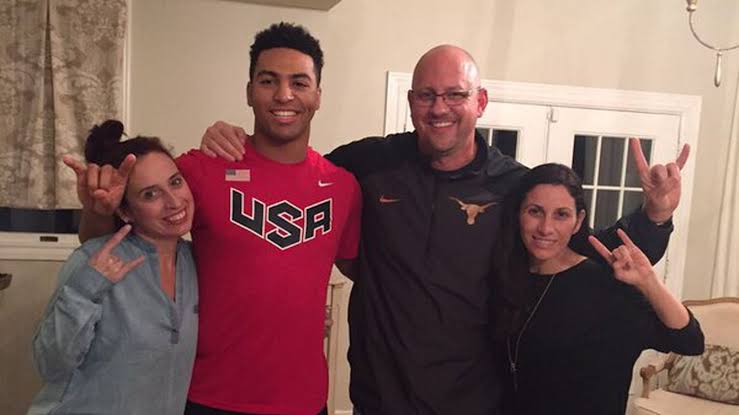Irvin Martin Smith Jr. is an American professional football tight end for the Houston Texans in the NFL.
He played college football at Alabama and was drafted by the Minnesota Vikings in the second round of the 2019 NFL Draft.
Smith has also played for the Cincinnati Bengals and Kansas City Chiefs.
Over his career, he has recorded 109 receptions for 973 yards and 10 touchdowns across 49 games.
Siblings
Irv has one sibling, an older brother named Ed “EZ” Smith, who is a former tight end in the NFL.
Their father, Irv Smith Sr., also played in the NFL.
The family has a strong football legacy, with both Irv Jr. and Ed having professional careers in the sport.
College career
Smith Jr. played college football at the University of Alabama from 2016 to 2018.
He was a highly regarded recruit coming out of Brother Martin High School in New Orleans, Louisiana, where he showcased his athleticism and receiving skills.
During his freshman year in 2016, Smith played sparingly, appearing in 11 games and recording a modest number of receptions.
His role increased significantly in his sophomore year (2017), where he caught 14 passes for 128 yards and two touchdowns, establishing himself as a reliable target in Alabama’s potent offense.
Smith had a breakout season in 2018, finishing with 44 receptions for 710 yards and seven touchdowns.
His performance helped the Crimson Tide reach the College Football Playoff, and he earned second-team All-America honors.
His ability to stretch the field and make plays after the catch showcased his versatility as a tight end, marking him as one of the top players at his position in college football.
Also Read: Jerry Jeudy Siblings: Get to Know Diane, Terry and Aaliyah

NFL career
In the 2019 NFL Draft, Smith was selected by the Minnesota Vikings in the second round as the 50th overall pick.
He made an immediate impact during his rookie season, playing in all 16 games and recording 36 receptions for 311 yards and two touchdowns.
His contributions as both a receiver and blocker were valuable to the Vikings’ offense.
In subsequent seasons, particularly in 2020, Smith continued to develop, finishing with 30 receptions for 365 yards and five touchdowns.
However, injuries began to affect his playing time in 2021 and 2022, limiting his production.
After his time with the Vikings, Smith signed with the Cincinnati Bengals in March 2023, aiming to revitalize his career alongside star quarterback Joe Burrow and an explosive offense.
Smith is known for his athleticism, speed, and agility that allow him to create mismatches against linebackers and safeties.
Accolades
During his time at the University of Alabama, Smith was recognized for his outstanding performance in the 2018 season, where he recorded 44 receptions for 710 yards and seven touchdowns.
This performance earned him second-team All-America honors and he was named to the All-SEC First Team.
In the NFL, while Smith has not yet made a Pro Bowl or All-Pro team, he has consistently contributed to his teams, showcasing his skills as a tight end.
His college accolades highlight his potential and impact on the field as he continues to develop in the professional ranks.
Email your news TIPS to Editor@kahawatungu.com or WhatsApp +254707482874
